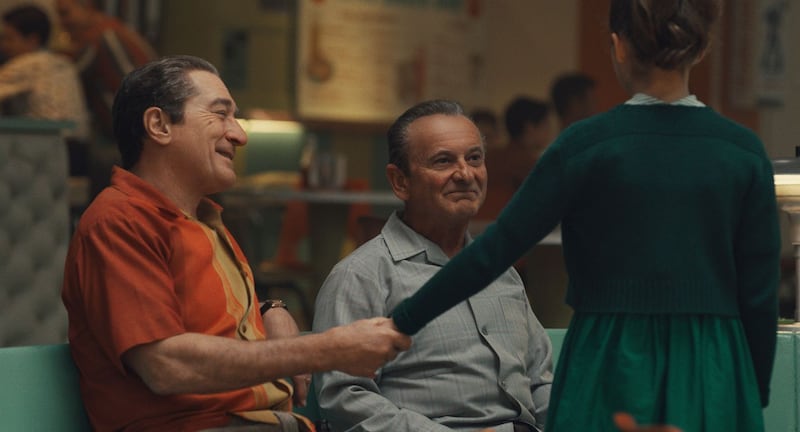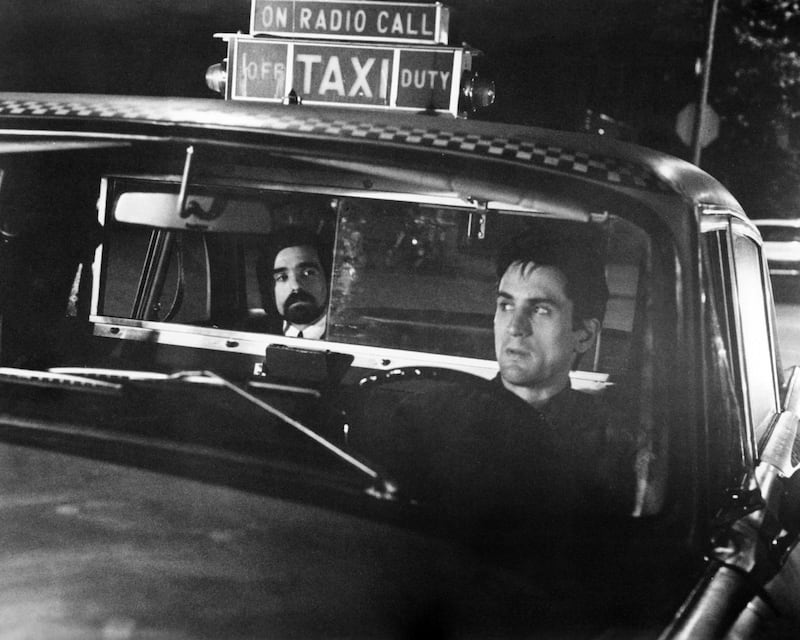The Irishman is many people's film of the year. Do you have any perspective on why, even though it hasn't been out very long, it has connected so strongly with audiences ?
I honestly can't give you an intelligent answer. The making of it was, in a way, fateful. We were blessed with financial and creative support from Netflix, and it seemed to just flow once it got started. I don't know how to accurately express the atmosphere, because people think, Oh, it's just old friends getting together and hanging out.' It wasn't really that way at all. It was something that we simply had to do. And I never expected it to be received this way. You know, we're at the end of our lives, and we just do the best we can. And if it hits a chord, and if people embrace it, that's wonderful.
Also, because of the Netflix situation, we were able to experiment more – narrative style, visual style, length. In a sense, the revolution is such that we don’t know where these films are being seen. Is there one place for a film to be seen now? You know, I grew up when there was only one place to see a film. And then there arrived a little 12in or 16in black-and-white TV, and that’s where I saw things such as the early David Lean films, The Third Man, Citizen Kane with commercials and the March of Time sequence edited out. Seeing them in the theatre was amazing – it was the main venue, so to speak – but you had the ancillary.
I guess it’s a long, roundabout way of saying that it just seemed to be natural and I followed my instincts in terms of style and length. And that was before we got to the detail of the CGI, which I call the evolution of make-up. That was extraordinarily experimental, too. We did not know if it was going to work, so we felt our way through it.
How key was the cast? Everyone seemed knocked out by you getting Joe Pesci and Robert De Niro and Harvey Keitel together, and bringing Al Pacino in.
Bob and I had tried for many years to come up with a project. This one actually started about 35 years ago with the idea of the remake of The Bad and the Beautiful and the sequel Two Weeks in Another Town. Somehow we exhausted that. And so when Bob came across this story and gave it to me, he said: “You know, this is an amazing part for Joe, if he wants to do it.” And also for Al Pacino – and I never worked with Al all these years, you know? We just knew that they were right for it. And then we looked at each other and realised we were meant for this somehow. It’s not necessarily a culmination, but a sense of contemplation of where we are, near the end of our lives.

When did you realise how topical the material about the gangsterisation of US politics was? It is prescient, really, how connected it is to the Trump era.
As we were doing it. Absolutely. We looked at each other in the middle of the shoot and realised this is exactly the case as it is now. That’s not to say that it hasn’t been that way in the past. But, maybe naively in this country, we always had an idea of checks and balances. And this isn’t the first time corruption has existed in government in this country. But now, it’s definitely at a crossroads. Now, it looks like it may be over.
Your intervention over Marvel and superhero films this year turned into a major news story. How calculated was it?
Obviously, we have been discussing this a lot, that theatres have been commandeered by superhero films – you know, just people flying around and banging and crashing, which is fine if you want to see it. It’s just that there’s no room for another kind of picture. I don’t know how many more I can make – maybe this is it. The last one. So the idea was to at least get it made and maybe show it for one day at the NFT, maybe one day at the Cinémathèque in Paris. I’m not kidding.
We are in a situation now where the theatres are only showing the latest superhero films. You have 12 screens – and 11 are the superhero film. You enjoy superhero films, fine, but you need 11 screens? It’s crazy for a picture like, you know, Lady Bird or The Souvenir. Those films may not necessarily be hugely commercial, but there are films that are modest and genuine and find a large audience. Just because a film is commercial doesn’t mean it can’t be art. What has consumed the theatres is product. A product is to be consumed and thrown away. Look at a commercial film like Singin’ in the Rain. You can watch it again and again. So the question is: how are we going to protect the art form?
Now, you don’t have to like the picture, but you couldn’t get The Aviator made today. You could not get Shutter Island made today, even with me and Leo [DiCaprio]. The Departed got made despite itself – the star power helped. We realised when we were taking this project around that the doors are closing. So what’s going on? I looked over at the theatres right down the block – 10 screens showing the same picture.
People comment that we’ve only shown this film in theatres for four weeks. We tried to get more, but the theatre owners and Netflix couldn’t come to terms. But you know, I’ve had pictures play only one week and get thrown out. In the US, The King of Comedy closed in a week. That film was ignored for 10 years.

Talking of King of Comedy, what was your feeling about Joker?
I’m fascinated by the fact that it’s influenced by King of Comedy and Taxi Driver. Especially King of Comedy, because I always point out that the only place that King of Comedy was appreciated was Britain. But I didn’t want to get involved with it.
You were also involved in other highly rated films this year – Happy as Lazzaro and The Souvenir, as well as Uncut Gems. Do you feel that you have shown these whippersnappers a thing or two with The Irishman?
Ha! No, I didn’t know, how could I? Put it this way: I was firm in my convictions on how to shoot The Irishman. Happy as Lazzaro I am “presenting” – I mean: I’m 77 and I’ve got things to do. Time is of the most value, right? I put my name on the line and say: “Yes, I think you should see this picture.”
The Souvenir is different; I was actually on in the beginning with Joanna [Hogg, its director]. She came to see me and we had discussions about it. The Safdie brothers, they’re crazy. I saw them in Telluride at a dinner and it was like they were mugging me. They look like two bandits. When they said they had Adam Sandler, I thought, Okay, that’s interesting. They would come on the set of The Irishman and hang out. There’s still an aspect of me that has an affinity with their ferocious manner, so to speak. But over the years, I have become more and more like Joanna’s films or Happy as Lazzaro – it’s about focusing on the essentials.
Did you anticipate what a lightning rod The Irishman would become over Netflix and its contest with the rest of the film industry?
Once we agreed to do the film with Netflix, I understood what it meant. We knew that it would primarily be seen on streaming but it would also be in theatres. But at that point, we knew we had to make the film and needed to get the financing. And also the main thing: creative freedom. We said: Okay, a condition is that it may only be shown in the theatre for one week. And I accepted that condition. My main concern was that it would be okay for the actors, that the Academy [of Motion Picture Arts & Sciences, which awards the Oscars] would accept it. Not for me, not for the film. I know that I’m at the end of a long, long ride. The main thing is to get the film made and to embrace this new world of how these pictures are going to be seen. – Guardian
The Irishman is streaming on Netflix










